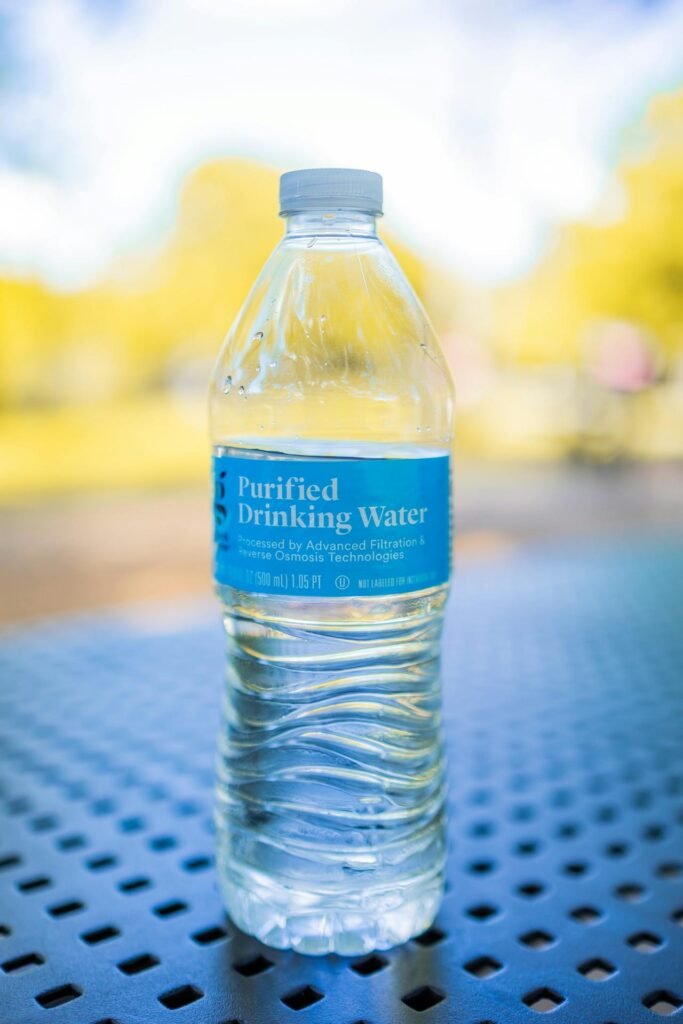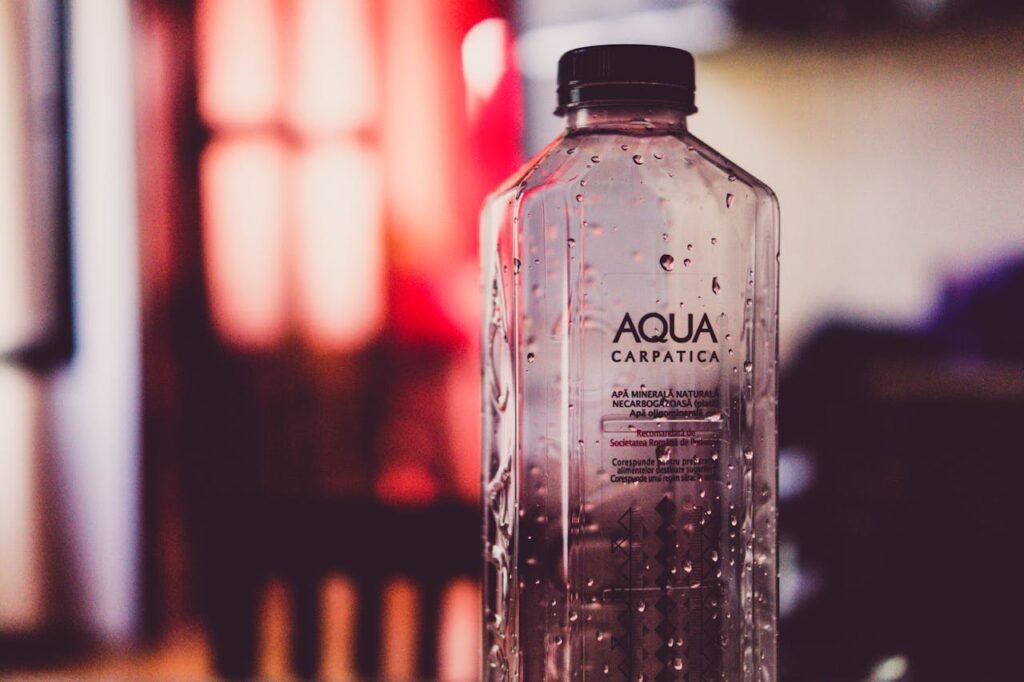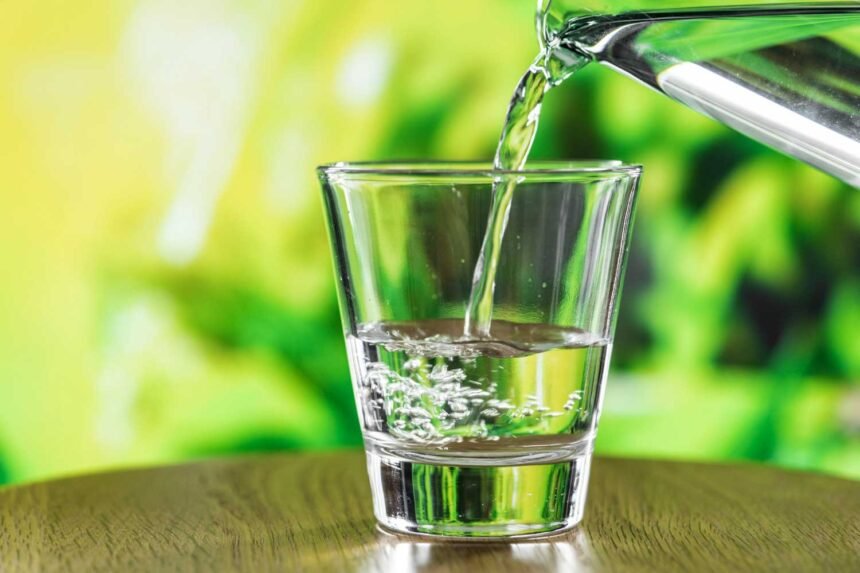In today’s health-conscious world, the quality of the water we drink is more important than ever. Many consumers find themselves asking, “Is purified water the same as distilled water?” This comprehensive guide will explore the differences between purified water and distilled water, helping you make an informed decision about which type of water is best for your needs.
We’ll delve into the purification processes, compare the benefits and drawbacks of each, and examine how they stack up against other types of water, such as spring water. By the end of this article, you’ll have a clear understanding of whether purified water is the same as distilled water and which option might be best for your health and lifestyle.
Understanding Water Purification: Purified Water vs Distilled Water
When it comes to understanding the difference between purified water and distilled water, it’s essential to start with the basics of water purification. Both purified water and distilled water undergo processes to remove impurities, but the methods and results differ significantly.
What is Purified Water?
Purified water is water that has been treated to remove impurities such as chemicals, contaminants, and other substances. The purification process can involve various methods, including:
- Filtration
- Reverse osmosis
- Ion exchange
- UV disinfection
The goal of water purification is to produce water that meets specific standards for purity, typically set by regulatory agencies. In the UK, for example, the Drinking Water Inspectorate (DWI) sets these standards.
Purified water can come from any source, including tap water, groundwater, or surface water. The purification process removes:
- Bacteria and other microorganisms
- Chemical contaminants
- Heavy metals
- Sediment and particulates
However, it’s important to note that some purification methods may leave trace amounts of minerals in the water.
What is Distilled Water?
Distilled water, on the other hand, is water that has undergone a specific purification process called distillation. This process involves:
- Boiling water to create steam
- Collecting and condensing the steam back into liquid form
Distillation effectively removes:
- Minerals
- Bacteria and other microorganisms
- Chemical contaminants
- Heavy metals
The result is water that is virtually free of all impurities, including beneficial minerals. This makes distilled water one of the purest forms of water available.
Key Differences: Purified Water vs Distilled Water
While both purified water and distilled water are clean and safe to drink, there are some key differences:
- Purification Process: Purified water can be produced through various methods, while distilled water is always created through the distillation process.
- Mineral Content: Purified water may retain some beneficial minerals, depending on the purification method used. Distilled water, however, is devoid of all minerals.
- Taste: Many people find that purified water has a more pleasant taste due to the presence of some minerals. Distilled water often has a flat or bland taste.
- Uses: Purified water is suitable for everyday drinking and cooking. Distilled water is often used in medical settings, laboratories, and certain appliances where mineral-free water is required.
- Energy Consumption: The distillation process typically requires more energy than other purification methods, making distilled water potentially less environmentally friendly.
Understanding these differences is crucial for health-conscious consumers who want to make informed decisions about their drinking water. In the following sections, we’ll explore these differences in more depth and examine how purified water and distilled water compare to other types of water, such as spring water.
The Purification Process: How Purified Water is Made
To truly understand whether purified water is the same as distilled water, it’s essential to delve into the purification process. Purified water can be created through various methods, each designed to remove specific contaminants and impurities. Let’s explore the most common purification techniques:
1. Filtration
Filtration is often the first step in the purification process. It involves passing water through a series of filters to remove particles and contaminants. There are several types of filtration:
- Sediment Filtration: Removes large particles like sand, dirt, and rust.
- Activated Carbon Filtration: Absorbs chlorine, organic compounds, and improves taste and odour.
- Ceramic Filtration: Removes bacteria and protozoa.
2. Reverse Osmosis
Reverse osmosis (RO) is a highly effective purification method that forces water through a semipermeable membrane under high pressure. This process removes:
- Dissolved solids
- Bacteria and viruses
- Chemical contaminants
- Heavy metals
RO can remove up to 99% of contaminants, making it one of the most thorough purification methods available.
3. Ion Exchange
Ion exchange is particularly effective at softening water and removing minerals that cause hardness. In this process:
- Water passes through a resin bed
- Ions of contaminants are exchanged for more desirable ions
- Commonly used to remove calcium and magnesium ions
4. UV Disinfection
Ultraviolet (UV) disinfection uses UV light to kill bacteria, viruses, and other microorganisms. While it doesn’t remove chemical contaminants or minerals, it’s an effective method for ensuring water is free from harmful pathogens.
5. Ozonation
Ozonation involves introducing ozone gas into the water. Ozone is a powerful oxidant that can:
- Kill bacteria and viruses
- Remove iron and manganese
- Improve taste and odour
Comparing Purification to Distillation
While these purification methods are highly effective, they differ from the distillation process in several key ways:
- Mineral Retention: Many purification methods, particularly reverse osmosis, can be adjusted to retain some beneficial minerals. Distillation, however, removes all minerals.
- Energy Efficiency: Most purification methods are more energy-efficient than distillation, which requires significant energy to boil water and condense steam.
- Scalability: Purification methods can be easily scaled for home use or large-scale municipal water treatment. Distillation is less practical for large-scale use due to energy requirements.
- Contaminant Removal: While both processes are effective at removing contaminants, distillation can remove volatile organic compounds (VOCs) that might pass through some purification methods.
Understanding these differences helps answer the question, “Is purified water the same as distilled water?” While both processes aim to produce clean, safe drinking water, the methods and results differ in important ways. Health-conscious consumers should consider these factors when choosing between purified water and distilled water for their hydration needs.

Spring Water vs Purified Water: Natural vs Processed
When discussing whether purified water is the same as distilled water, it’s also important to consider how these types of water compare to natural sources like spring water. Spring water vs purified water is a common comparison that health-conscious consumers often consider. Let’s explore the key differences and similarities:
What is Spring Water?
Spring water comes from natural underground sources and rises to the surface on its own. It’s typically collected at the spring’s source or through a borehole tapping the underground formation feeding the spring. Key characteristics of spring water include:
- Natural filtration through rock and soil
- Contains naturally occurring minerals
- May contain trace amounts of contaminants
- Regulated for safety and quality
Spring Water vs Purified Water: A Comparison
When comparing spring water vs purified water, several factors come into play:
- Source:
- Spring Water: Comes from a natural, underground source
- Purified Water: Can come from any source, including tap water, before purification
- Mineral Content:
- Spring Water: Contains naturally occurring minerals, which can vary based on the source
- Purified Water: May have some minerals, depending on the purification process used
- Taste:
- Spring Water: Often preferred for its natural, refreshing taste
- Purified Water: Can have a neutral taste, sometimes described as “flat”
- Purity:
- Spring Water: Naturally filtered but may contain some contaminants
- Purified Water: Processed to remove most impurities and contaminants
- Regulation:
- Spring Water: Must meet specific criteria to be labelled as spring water
- Purified Water: Must meet purity standards set by regulatory agencies
Benefits of Spring Water
- Natural mineral content, which can contribute to daily nutrient intake
- Often preferred taste due to mineral content
- Minimal processing, appealing to those seeking “natural” products
Benefits of Purified Water
- Consistent quality regardless of source
- Removal of potentially harmful contaminants
- Can be produced from readily available sources, reducing transportation needs
Considerations for Health-Conscious Consumers
When choosing between spring water vs purified water, consider:
- Personal Health Needs: If you require specific mineral intake or need to avoid certain contaminants, purified water might be a better choice.
- Environmental Impact: Spring water often requires transportation from its source, while purified water can be produced locally.
- Taste Preference: Some people prefer the taste of spring water due to its mineral content.
- Intended Use: For everyday drinking, either option can be suitable. For specific uses (e.g., in appliances), purified water might be preferable.
While spring water and purified water are both distinct from distilled water, understanding their differences helps provide a fuller picture of the water options available to consumers. Both spring water and purified water can be healthy choices, and the best option often depends on individual needs and preferences.
As we continue to explore the question “Is purified water the same as distilled water?”, it’s clear that while purified water and distilled water share the goal of providing clean, safe drinking water, they differ significantly from natural sources like spring water. Health-conscious consumers should consider these differences when making choices about their drinking water.
Distilled Water vs Purified Water: A Detailed Comparison
To fully address the question “Is purified water the same as distilled water?”, we need to conduct a detailed comparison of distilled water vs purified water. While both types of water are considered clean and safe for consumption, they have distinct characteristics that set them apart.
Production Process
Distilled Water:
- Produced through distillation
- Water is boiled to create steam
- Steam is collected and condensed back into liquid form
- Process removes virtually all impurities and minerals
Purified Water:
- Can be produced through various methods (filtration, reverse osmosis, etc.)
- Process removes most impurities
- Some methods can be adjusted to retain certain minerals
Purity Level
Distilled Water:
- Considered one of the purest forms of water
- Contains virtually no dissolved solids or minerals
- Typically has a TDS (Total Dissolved Solids) reading close to 0 ppm
Purified Water:
- Very pure, but may contain trace amounts of minerals
- TDS levels can vary but are generally very low
- Purity level can depend on the specific purification method used
Mineral Content
Distilled Water:
- Contains no minerals
- Can be considered “dead” water due to lack of mineral content
Purified Water:
- May contain trace amounts of minerals
- Mineral content can be adjusted in some purification processes
Taste
Distilled Water:
- Often described as flat or bland due to lack of minerals
- Some people find the taste unpleasant
Purified Water:
- Generally has a neutral taste
- May have a slightly better taste than distilled water due to potential mineral content
Uses
Distilled Water:
- Commonly used in medical settings and laboratories
- Used in appliances like irons and car batteries
- Sometimes used for drinking, especially by those with specific health concerns
Purified Water:
- Widely used for drinking and cooking
- Suitable for most household uses
- Often used in commercial food and beverage production
Health Considerations
Distilled Water:
- Lack of minerals may lead to mineral deficiencies if used as the sole water source long-term
- Very effective at hydration due to its purity
- May leach minerals from the body, though this is debated
Purified Water:
- Generally considered safe and healthy for regular consumption
- May provide small amounts of beneficial minerals depending on the purification process
- Less likely to cause mineral imbalances compared to distilled water
Environmental Impact
Distilled Water:
- Distillation process is energy-intensive
- Not typically produced on a large scale due to energy requirements
Purified Water:
- Many purification methods are more energy-efficient than distillation
- Can be produced on a larger scale more easily
Cost
Distilled Water:
- Often more expensive due to the energy-intensive production process
- May require specialised equipment for home production
Purified Water:
- Generally less expensive than distilled water
- Many affordable home purification systems are available
This detailed comparison of distilled water vs purified water highlights the key differences between these two types of water. While both are clean and safe for consumption, they have distinct characteristics that may make one more suitable than the other depending on the intended use and individual preferences.
For health-conscious consumers wondering “Is purified water the same as distilled water?”, the answer is clear: while both are forms of clean water, they are not the same. The choice between distilled water and purified water should be based on individual needs, health considerations, and intended use.

This comprehensive guide explores the key differences between purified water and distilled water, addressing the question “Is purified water the same as distilled water?” for health-conscious consumers.
The article delves into production methods, mineral content, taste, health implications, and environmental impacts of both water types.
It also compares them to spring water and provides practical applications for each. With expert insights, FAQs, and a detailed comparison, readers will gain a clear understanding of which water type best suits their needs.
Health Implications: Choosing Between Purified and Distilled Water
As health-conscious consumers, understanding the potential health implications of choosing between purified and distilled water is crucial. While both types of water are generally safe for consumption, they can have different effects on your health. Let’s explore the health considerations for each:
Health Benefits of Purified Water
- Contaminant Removal: Purified water effectively removes harmful contaminants, including bacteria, parasites, and chemical pollutants.
- Potential Mineral Content: Depending on the purification method, purified water may retain some beneficial minerals.
- Improved Taste: Many people find purified water more palatable than tap water, which may encourage increased water consumption.
- Reduced Exposure to Chlorine: Most purification methods remove chlorine, which can be beneficial for those sensitive to its taste or smell.
- Versatility: Suitable for various uses, including drinking, cooking, and food preparation.
Health Considerations for Distilled Water
- Ultimate Purity: Distilled water is free from virtually all contaminants, making it an excellent choice for those with compromised immune systems.
- Lack of Minerals: The absence of minerals in distilled water can be both a benefit and a drawback:
- Beneficial for those needing to limit mineral intake (e.g., kidney stone formers)
- Potentially problematic for long-term use as the sole water source due to possible mineral deficiencies
- Potential for Mineral Leaching: Some studies suggest that drinking distilled water may lead to the leaching of minerals from the body, though this is debated.
- Acidity: Distilled water can be slightly acidic due to the absorption of carbon dioxide from the air.
Making the Right Choice for Your Health
When deciding between purified water and distilled water, consider:
- Your Overall Diet: If you have a balanced diet rich in minerals, the lack of minerals in distilled water may not be a concern.
- Specific Health Conditions: Consult with a healthcare professional if you have conditions that may be affected by water mineral content.
- Intended Use: For general hydration, purified water is often sufficient. For specific medical or laboratory uses, distilled water may be necessary.
- Environmental Factors: Consider the quality of your local water supply when deciding on additional purification needs.
- Personal Preference: Some people prefer the taste of purified water over distilled water, which can encourage better hydration.
Expert Opinions
Many health experts agree that for most healthy individuals, purified water is a suitable choice for daily consumption. Dr. Michael Bergeron, a hydration expert, states, “For the average person, purified water provides safe hydration while potentially retaining some beneficial minerals.”
However, Dr. Andrew Weil, a well-known integrative medicine physician, notes, “Distilled water can be beneficial for short-term detoxification, but I don’t recommend it as a long-term drinking water source due to its lack of minerals.
The Bottom Line
While both purified water and distilled water are safe for consumption, they are not the same in terms of their potential health impacts. Purified water often strikes a balance between purity and mineral content, making it a suitable choice for most people’s daily hydration needs. Distilled water, with its ultimate purity, may be beneficial in specific situations but may not be ideal for long-term, exclusive use.
As a health-conscious consumer, the key is to make an informed decision based on your individual needs, health status, and lifestyle. Remember, water is just one part of your overall health equation, and its impact should be considered in the context of your entire diet and health regimen.
Environmental Considerations: Purified Water vs Distilled Water
When comparing purified water vs distilled water, it’s crucial to consider the environmental impact of each option. As health-conscious consumers, many of us are also environmentally conscious, seeking solutions that are good for both our bodies and the planet.
Energy Consumption
Distilled Water:
- The distillation process is energy-intensive, requiring significant heat to boil water and condense steam.
- Home distillation units can increase household energy consumption.
- Large-scale distillation for commercial purposes can have a substantial carbon footprint.
Purified Water:
- Many purification methods, such as reverse osmosis and filtration, are more energy-efficient than distillation.
- Some purification systems, like gravity-fed filters, require no electricity at all.
- Large-scale purification plants can be designed with energy efficiency in mind.
Waste Production
Distilled Water:
- The distillation process doesn’t produce significant waste, as most contaminants remain in the boiling chamber.
- However, the energy waste in the form of heat can be considerable.
Purified Water:
- Some purification methods, particularly reverse osmosis, can produce wastewater.
- Advanced systems are becoming more efficient, reducing the amount of wastewater produced.
- Proper disposal or recycling of used filters is necessary to minimize environmental impact.
Packaging and Transportation
Both distilled and purified water, when sold in bottles, contribute to plastic waste and transportation-related emissions. However:
- Distilled water is often produced centrally and transported to retailers, increasing its carbon footprint.
- Purified water can be produced locally, even at home, reducing transportation needs.
Sustainability Initiatives
Many companies producing purified water are implementing sustainability initiatives:
- Using recycled plastics for bottles
- Offering refill stations to reduce single-use plastic consumption
- Implementing water-efficient purification processes
While similar initiatives exist for distilled water, they are less common due to the nature of the distillation process.
Making an Eco-Friendly Choice
For environmentally conscious consumers wondering, “Is purified water the same as distilled water in terms of environmental impact?”, the answer is no. Purified water generally has a lower environmental impact due to:
- Lower energy requirements for production
- Potential for local production, reducing transportation needs
- More options for sustainable packaging and consumption
However, the most eco-friendly choice is often to purify water at home using energy-efficient methods and reusable containers. This approach minimizes packaging waste and transportation emissions while still providing clean, safe drinking water.
Remember, the environmental impact of your water choice extends beyond just the water itself. Consider the entire lifecycle of the product, from production to disposal, when making your decision.
Practical Applications: When to Choose Purified or Distilled Water
Understanding the differences between purified water and distilled water is crucial, but knowing when to use each type is equally important. Let’s explore some practical applications for both purified and distilled water:
Purified Water Applications
- Daily Drinking Water: Purified water is an excellent choice for everyday hydration. It’s clean, safe, and may retain some beneficial minerals.
- Cooking: The neutral taste of purified water makes it ideal for cooking, as it won’t alter the flavour of your dishes.
- Coffee and Tea Making: Many coffee and tea enthusiasts prefer purified water for its clean taste and lack of impurities that could affect the flavour of their beverages.
- Pet Hydration: Purified water is generally safe for pets and can be a good choice if your tap water quality is questionable.
- Plant Watering: While tap water is usually fine for plants, purified water can be beneficial for sensitive plants or in areas with hard water.
- Aquariums: Purified water, when remineralized, can be used in aquariums to ensure a clean, controlled environment for fish.
Distilled Water Applications
- Medical Devices: CPAP machines and neti pots require distilled water to prevent mineral buildup and ensure cleanliness.
- Laboratory Use: The high purity of distilled water makes it ideal for scientific experiments and lab work.
- Automotive Cooling Systems: Distilled water is often recommended for car radiators and cooling systems to prevent mineral deposits.
- Humidifiers: Using distilled water in humidifiers can prevent the release of minerals into the air and reduce white dust.
- Ironing: Distilled water is excellent for steam irons, as it prevents mineral buildup that can clog the appliance.
- Certain Health Conditions: Some health conditions may benefit from the use of distilled water, but this should be discussed with a healthcare professional.
Making the Right Choice
When deciding between purified and distilled water, consider:
- Intended Use: Match the water type to its application for best results.
- Health Needs: Consult with a healthcare provider if you have specific health concerns.
- Environmental Impact: Consider the energy and resources required for each option.
- Cost: Distilled water is often more expensive due to its energy-intensive production process.
- Taste Preference: If you’re using the water for drinking, choose the option you find most palatable.
Remember, for most everyday uses, purified water is a versatile and practical choice. Distilled water, while extremely pure, is often best reserved for specific applications where its unique properties are beneficial or necessary.
By understanding these practical applications, health-conscious consumers can make informed decisions about when to use purified water vs distilled water, ensuring they’re using the right type of water for each situation.

FAQs: Purified Water vs Distilled Water
To further clarify the differences between purified water and distilled water, let’s address some frequently asked questions:
- Q: Is purified water the same as distilled water?
A: No, purified water and distilled water are not the same. While both are clean and safe to drink, they undergo different processes and have distinct characteristics. Purified water is treated to remove impurities but may retain some minerals, while distilled water is boiled and recondensed, removing all impurities and minerals. - Q: Which is better for drinking: purified or distilled water?
A: For most people, purified water is suitable for daily drinking. It’s clean, safe, and may retain some beneficial minerals. Distilled water, while very pure, lacks minerals and may not be ideal for long-term, exclusive consumption. - Q: Can I use purified water instead of distilled water in my CPAP machine?
A: It’s best to use distilled water in CPAP machines as recommended by manufacturers. Distilled water prevents mineral buildup that could damage the device or affect its performance. - Q: Does purified water have any minerals?
A: Purified water may contain trace amounts of minerals, depending on the purification method used. Some processes, like reverse osmosis, can be adjusted to retain certain beneficial minerals. - Q: Is it safe to drink distilled water every day?
A: While distilled water is safe to drink, it’s not typically recommended as the sole source of drinking water long-term. Its lack of minerals could potentially lead to mineral deficiencies if not balanced with a mineral-rich diet. - Q: Does purified water remove fluoride?
A: Many purification methods, including reverse osmosis, can remove fluoride. However, some purification processes may not be as effective at fluoride removal. Check the specific purification method or product specifications for accurate information. - Q: Can I use purified water in my iron instead of distilled water?
A: While distilled water is ideal for irons to prevent mineral buildup, purified water can be a good alternative if it’s been treated to remove most minerals. However, over time, even small amounts of minerals in purified water could accumulate in your iron. - Q: Is spring water the same as purified water?
A: No, spring water and purified water are different. Spring water comes from natural sources and contains naturally occurring minerals. Purified water can come from any source and is treated to remove impurities. - Q: Does boiling tap water make it the same as distilled water?
A: No, boiling tap water is not the same as distillation. Boiling can kill microorganisms but doesn’t remove dissolved solids or all contaminants. Distillation involves boiling water and then collecting and condensing the steam. - Q: Which is more environmentally friendly: purified or distilled water?
A: Generally, purified water is more environmentally friendly due to lower energy requirements for production. Distillation is an energy-intensive process, especially when done on a large scale.
These FAQs help to further clarify the differences between purified water and distilled water, addressing common concerns and misconceptions. Remember, while both types of water are safe for consumption, they have distinct characteristics and applications. As a health-conscious consumer, understanding these differences can help you make the best choice for your specific needs.
Conclusion: Making an Informed Choice
As we’ve explored throughout this comprehensive guide, the question “Is purified water the same as distilled water?” has a clear answer: No, they are not the same. While both purified water and distilled water offer clean, safe hydration options, they have distinct characteristics, production methods, and ideal uses.
Let’s recap the key points:
- Production Process: Purified water can be produced through various methods like filtration, reverse osmosis, and UV disinfection. Distilled water is created through a specific process of boiling and condensation.
- Mineral Content: Purified water may retain some beneficial minerals, depending on the purification method. Distilled water is devoid of all minerals.
- Taste: Many people prefer the taste of purified water due to its potential mineral content. Distilled water often has a flat or bland taste.
- Applications: Purified water is versatile and suitable for daily drinking and cooking. Distilled water is often used in medical devices, laboratories, and certain appliances.
- Health Considerations: Both are safe for consumption, but long-term, exclusive use of distilled water may lead to mineral deficiencies in some cases.
- Environmental Impact: Purified water generally has a lower environmental impact due to less energy-intensive production methods.
- Cost: Purified water is often more cost-effective, especially for daily use.
As a health-conscious consumer, your choice between purified water and distilled water should be based on your specific needs, health considerations, and intended use. For most people, purified water offers a balanced option for daily hydration, cooking, and general use. Distilled water, while extremely pure, is often best reserved for specific applications where its unique properties are beneficial or necessary.
Remember, the best water choice is one that encourages you to stay properly hydrated. Whether you opt for purified water, distilled water, or another type of water, the most important thing is to drink enough water to support your overall health and wellbeing.
Ultimately, by understanding the differences between purified water and distilled water, you’re empowered to make an informed decision that aligns with your health goals, lifestyle, and values. Stay hydrated, stay informed, and cheers to your health!






